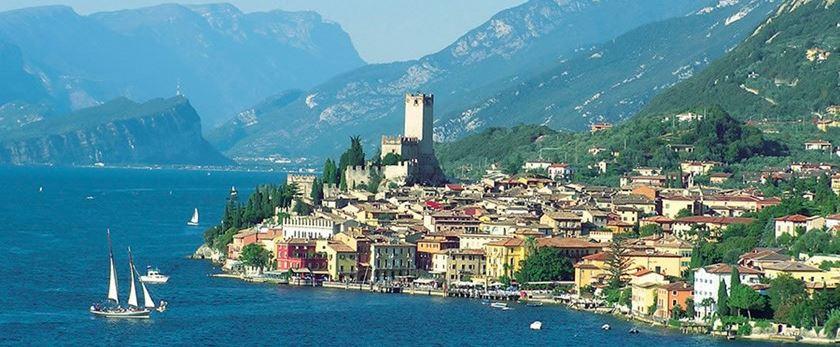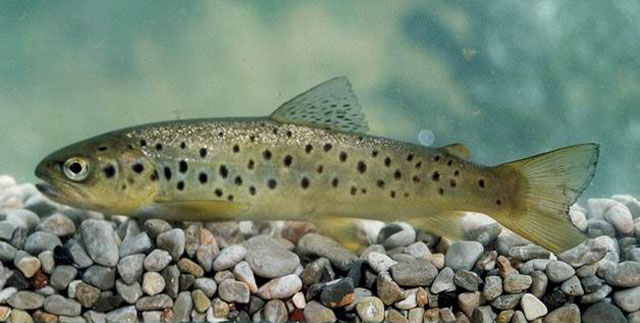Case Study
Salmo carpio in Garda lake. An active wild population recovery strategy
Contact name
Zambiasi Maria Beatrice
Institution name
Comunità Montana Parco Alto Garda Bresciano
Region & country
Lombardia (Garda Lake) - Italy
Summary
Carpione (Salmo carpio) is a pelagic and bathyal salmonid species, one of most endangered fish in Europe. No other fish has been deeply involved in the cultural and economic background as Carpione did in the past. Nowadays wild Carpione stock is seriously endangered due to past non-sustainable fishing effort and environmental alterations. This project plans, tests, and leads applied ecology strategy to sustain and restock Carpione by working in his natural habitat. Artificial breeding and other past projects goals are just starting points to apply active actions inside the lake. Natural processes have to act right to increase the wild Carpione population. Parco Alto Garda Bresciano leads the project, involving a stakeholders network as a partner.

Garda lake
Photo by: Parco regionale dell'Alto Garda Bresciano

Carpione (Salmo carpio)
Photo by: Parco regionale dell'Alto Garda Bresciano
Background of the project
The carpione Salmo carpio, an endemic fish of the Garda lake, Italy, is considered “vulnerable” by the IUCN. It represents an invaluable element of biodiversity, but also a cultural and economic resource for the Garda lake community. Up to the end of the ’80s, about 200 ql of carpione were yearly fished, but in the following years the stock has progressively rarefied, and now fishing is forbidden to preserve the species. Some restocking has been done in the past, but with limited benefits.
Local communities are asking for an immediate and effective measure of conservation and recovery of the carpione, being aware of its natural and cultural values. The peculiar biology of this species, which completes the reproduction in deep waters (40-200 m), makes very difficult the implementation of captive breeding and reproduction. As a supplementary and fundamental strategy, in this project, we aim to plan interventions within the lake and monitoring, to support the natural recovery of the stock.
Solution and actions taken
- Sustaining the stock by clearly identifying natural spawning sites;
- Monitoring the reproductive areas and behavior;
- Define stock dimension of wild population;
- Identifying the causes of declining;
- Restoring natural spawning areas;
- Restocking actions inside the lake, directly in natural habitats;
- Create an active network of local actors involved in the project;
- Enlarge the panel of potential beneficiaries;
- Promoting and regulating a sustainable exploitation of the carpione stock;
- Crowdfunding.
We propose:
- To monitor the reproduction success by implementing various technologies, such, as genetic analysis, row surveys, radiotracking, etc…;
- To investigate the causes of stock decline by looking at long-term trends of limnological, hydrological or fishing data;
- To support the natural recovery by mixing captive breeding and in situ interventions located at the reproductive sites;
- To formulate plans for the future sustainable exploitation of the stock.
Other institutions or parties involved
Project leader: Parco Alto Garda Bresciano.
Partners:
- IRSA – CNR Istituto di Ricerca Sulle Acque;
- Centro Studi Biologia e Ambiente snc;
- APD La Fario ZPS;
- Deep Explorers;
- Associazione Pescatori Tremosine;
- Fishing and touristic business partners.
Results
The project is now in its initial phase, so it is still early to verify any feedback.
Challenges
The project is now in the initial phase. We forecast that we could face with a synergic action of more negative factors affecting the carpione recruitment, such as excessive exploitation, global changes, alteration of the trophic status of the lake, alteration of the hydrological balance within the watershed, which could not be disentangled easily. Moreover, a long delay could be required to verify any beneficial effect on natural stocks.
Lessons learned
The project is now in its initial phase, so it is still early to verify any feedback.
Contact name
Zambiasi Maria Beatrice
Institution name
Comunità Montana Parco Alto Garda Bresciano
Website(s)
